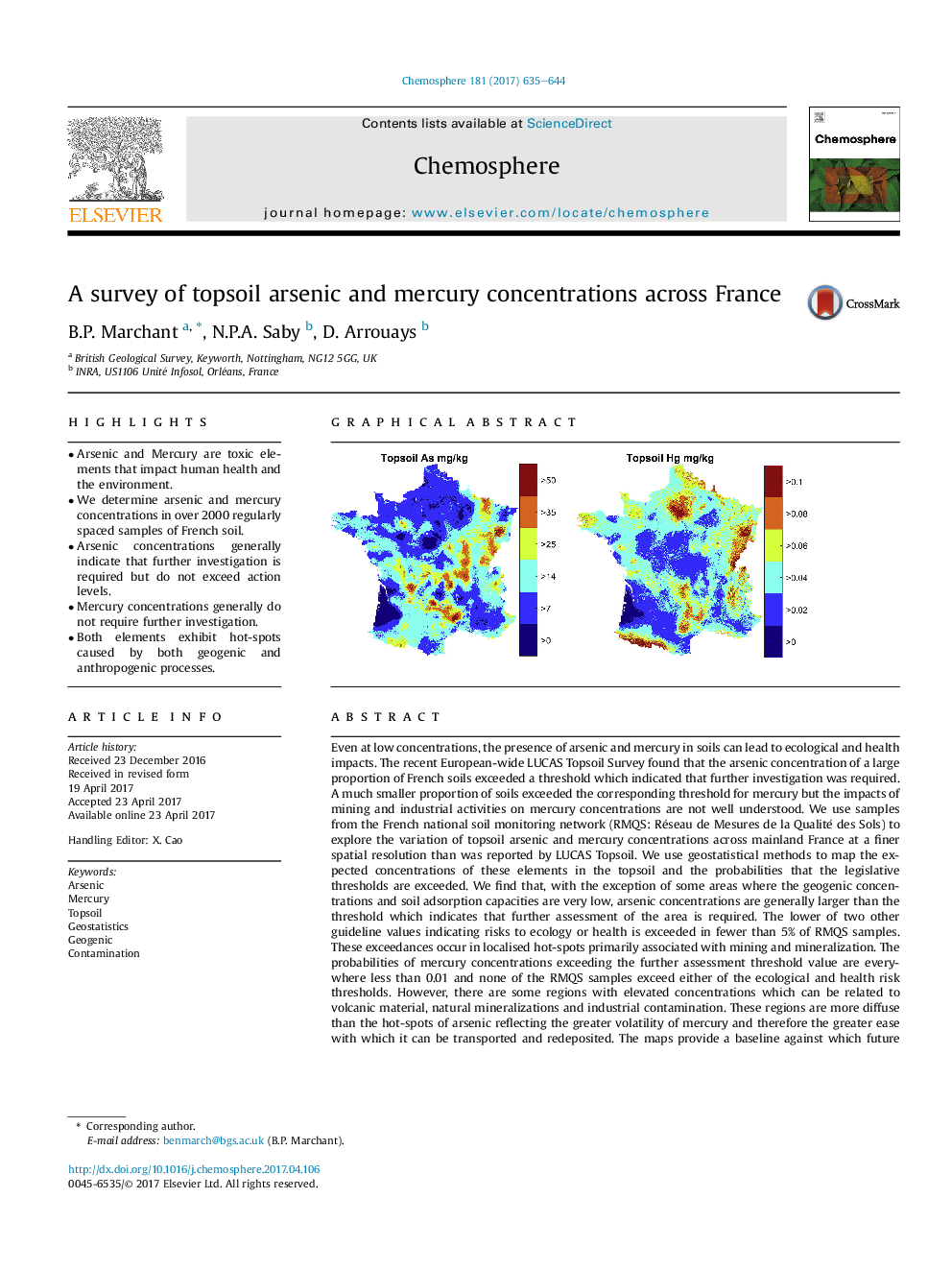| کد مقاله | کد نشریه | سال انتشار | مقاله انگلیسی | نسخه تمام متن |
|---|---|---|---|---|
| 5747152 | 1618790 | 2017 | 10 صفحه PDF | دانلود رایگان |
- Arsenic and Mercury are toxic elements that impact human health and the environment.
- We determine arsenic and mercury concentrations in over 2000 regularly spaced samples of French soil.
- Arsenic concentrations generally indicate that further investigation is required but do not exceed action levels.
- Mercury concentrations generally do not require further investigation.
- Both elements exhibit hot-spots caused by both geogenic and anthropogenic processes.
Even at low concentrations, the presence of arsenic and mercury in soils can lead to ecological and health impacts. The recent European-wide LUCAS Topsoil Survey found that the arsenic concentration of a large proportion of French soils exceeded a threshold which indicated that further investigation was required. A much smaller proportion of soils exceeded the corresponding threshold for mercury but the impacts of mining and industrial activities on mercury concentrations are not well understood. We use samples from the French national soil monitoring network (RMQS: Réseau de Mesures de la Qualité des Sols) to explore the variation of topsoil arsenic and mercury concentrations across mainland France at a finer spatial resolution than was reported by LUCAS Topsoil. We use geostatistical methods to map the expected concentrations of these elements in the topsoil and the probabilities that the legislative thresholds are exceeded. We find that, with the exception of some areas where the geogenic concentrations and soil adsorption capacities are very low, arsenic concentrations are generally larger than the threshold which indicates that further assessment of the area is required. The lower of two other guideline values indicating risks to ecology or health is exceeded in fewer than 5% of RMQS samples. These exceedances occur in localised hot-spots primarily associated with mining and mineralization. The probabilities of mercury concentrations exceeding the further assessment threshold value are everywhere less than 0.01 and none of the RMQS samples exceed either of the ecological and health risk thresholds. However, there are some regions with elevated concentrations which can be related to volcanic material, natural mineralizations and industrial contamination. These regions are more diffuse than the hot-spots of arsenic reflecting the greater volatility of mercury and therefore the greater ease with which it can be transported and redeposited. The maps provide a baseline against which future phases of the RMQS can be compared and highlight regions where the threat of soil contamination and its impacts should be more closely monitored.
510
Journal: Chemosphere - Volume 181, August 2017, Pages 635-644
